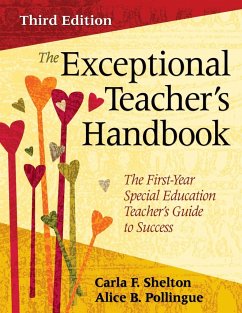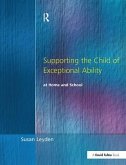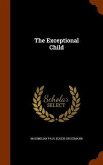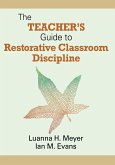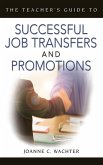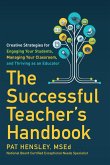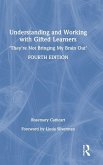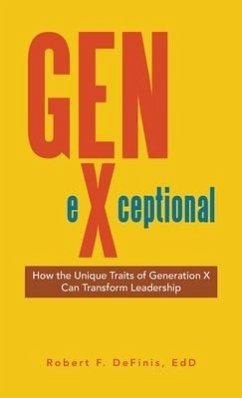Carla F. Shelton, Alice B. Pollingue
The Exceptional Teacher's Handbook
The First-Year Special Education Teacher's Guide to Success
Carla F. Shelton, Alice B. Pollingue
The Exceptional Teacher's Handbook
The First-Year Special Education Teacher's Guide to Success
- Broschiertes Buch
- Merkliste
- Auf die Merkliste
- Bewerten Bewerten
- Teilen
- Produkt teilen
- Produkterinnerung
- Produkterinnerung
Specific guidelines and strategies to help special educators navigate their first year! This revised edition of a bestseller helps special educators move confidently from preplanning to post-planning for the school year. Teachers will find a step-by-step management approach complete with planning checklists and other ready-to-use forms. Featuring revisions based on IDEA 2004 and NCLB, this popular reference also provides updates on: Recognized disabilities Best instructional practices Successful parent conferences Effective plans for professional learning Alternate assessments, emergencies in the school setting, education terminology, and more…mehr
Andere Kunden interessierten sich auch für
![Supporting the Child of Exceptional Ability at Home and School Supporting the Child of Exceptional Ability at Home and School]() Susan LeydenSupporting the Child of Exceptional Ability at Home and School148,99 €
Susan LeydenSupporting the Child of Exceptional Ability at Home and School148,99 €![The Exceptional Child The Exceptional Child]() Maximilian Paul Eugen GroszmannThe Exceptional Child43,99 €
Maximilian Paul Eugen GroszmannThe Exceptional Child43,99 €![The Teacher's Guide to Restorative Classroom Discipline The Teacher's Guide to Restorative Classroom Discipline]() Luanna H. MeyerThe Teacher's Guide to Restorative Classroom Discipline36,99 €
Luanna H. MeyerThe Teacher's Guide to Restorative Classroom Discipline36,99 €![The Teacher's Guide to Successful Job Transfers and Promotions The Teacher's Guide to Successful Job Transfers and Promotions]() Joanne Wachter GhioThe Teacher's Guide to Successful Job Transfers and Promotions47,99 €
Joanne Wachter GhioThe Teacher's Guide to Successful Job Transfers and Promotions47,99 €![The Successful Teacher's Handbook The Successful Teacher's Handbook]() Pat HensleyThe Successful Teacher's Handbook21,99 €
Pat HensleyThe Successful Teacher's Handbook21,99 €![Understanding and Working with Gifted Learners Understanding and Working with Gifted Learners]() Rosemary CathcartUnderstanding and Working with Gifted Learners176,99 €
Rosemary CathcartUnderstanding and Working with Gifted Learners176,99 €![Gen-eXceptional Gen-eXceptional]() Robert F. DeFinis EdDGen-eXceptional36,99 €
Robert F. DeFinis EdDGen-eXceptional36,99 €-
-
-
Specific guidelines and strategies to help special educators navigate their first year! This revised edition of a bestseller helps special educators move confidently from preplanning to post-planning for the school year. Teachers will find a step-by-step management approach complete with planning checklists and other ready-to-use forms. Featuring revisions based on IDEA 2004 and NCLB, this popular reference also provides updates on: Recognized disabilities Best instructional practices Successful parent conferences Effective plans for professional learning Alternate assessments, emergencies in the school setting, education terminology, and more
Produktdetails
- Produktdetails
- Verlag: Corwin
- 3. Auflage
- Seitenzahl: 240
- Erscheinungstermin: 27. Februar 2009
- Englisch
- Abmessung: 280mm x 216mm x 13mm
- Gewicht: 615g
- ISBN-13: 9781412969147
- ISBN-10: 141296914X
- Artikelnr.: 25325808
- Herstellerkennzeichnung
- Libri GmbH
- Europaallee 1
- 36244 Bad Hersfeld
- gpsr@libri.de
- Verlag: Corwin
- 3. Auflage
- Seitenzahl: 240
- Erscheinungstermin: 27. Februar 2009
- Englisch
- Abmessung: 280mm x 216mm x 13mm
- Gewicht: 615g
- ISBN-13: 9781412969147
- ISBN-10: 141296914X
- Artikelnr.: 25325808
- Herstellerkennzeichnung
- Libri GmbH
- Europaallee 1
- 36244 Bad Hersfeld
- gpsr@libri.de
Carla F. Shelton has 11 years of teaching experience in the special education profession. She has taught students with disabilities in Grades 2-12 in resource, self-contained, and inclusion settings. Shelton is certified in the areas of specific learning disabilities, emotional/behavior disorders, mildly intellectual disabilities, elementary grades (P-8), school counseling (P-12), and educational leadership and supervision. She has served as a high school counselor for the past five years, working with students in Grades 9-12. Shelton is the author of Best Practices for Secondary School Counselors. Shelton is knowledgeable in instructional techniques and best classroom practices that promote and foster student learning. She is skilled in designing and implementing strategies to assist students with disabilities in meeting academic and behavior goals and objectives, to bridge the gap between school and parents, and to assist students with the transition process from school-to-school and to postsecondary endeavors. Shelton has mastered the art of collaboration with regular education teachers and staff and works effectively with families of students with disabilities. She has presented at the High Schools That Work Summer Conference, the National Tech Prep Conference, the Georgia School Counselor Conference, and the Association for Supervision and Curriculum Development Annual Conference. Shelton's professional affiliations include the American School Counselor Association, Georgia School Counselor Association, National Tech Prep Network, and Professional Association of Georgia Educators. Finally, Shelton's solid education background and broad-based educational experience is the foundation on which The Exceptional Teacher's Handbook is built.
Preface Acknowledgments About the Authors Introduction 1. Preparing for a Successful School Year Strategy 1: Get to Know Your School Strategy 2: Allocate Time for Reflecting Strategy 3: Locate a Mentor Teacher Strategy 4: Identify Essential Tasks Strategy 5: Orientate Assigned Paraprofessionals Strategy 6: Establish a Communication System Form 1.1. Get to Know Your School Checklist Form 1.2. Preplanning Checklist Form 1.3. Monthly Planning Checklist Form 1.4. Postplanning Checklist Form 1.5. Correspondence Log Form 1.6. Student Emergency Information Form 1.7. Noninstructional Classroom Supply Checklist Form 1.8. Instructional Classroom Supply Checklist Form 1.9. Classroom Inventory Checklist Form 1.10. Paraprofessional
s Classroom Responsibilties Checklist Form 1.11. Student Service Information Form 1.12. Present Levels of Performance Form 1.13. Self-Evaluation Instrument for the Special Education Teacher Resource 1.1. Suggestions for Working With a Paraprofessional Resource 1.2. Web Sites for Parents and Students Resource 1.3. Assistive Technology Information 2. Understanding Students With Disabilities Strategy 1: Review Student Information Strategy 2: Conduct Student Surveys and Inventories Strategy 3: Review Recognized Disabilities in IDEA Form 2.1. Student Folder Checklist Form 2.2. Student Profile Form 2.3. Student Academic Inventory Form 2.4. Student Learning Styles Survey Form 2.5. Student Interest Survey 3. Placing Students in the Least Restrictive Environment Section 1: Review of Service Delivery Models Section 2: The Placement Decision Section 3: Classroom Accommodations and Modifications Section 4: Monitoring Students in the General Education Setting Section 5: Tips for the Regular Education Teacher Form 3.1. Selecting the Least Restrictive Environment Checklist Form 3.2. Teacher Summary Report Form 3.3. Classroom Adaptations Form 3.4. Classroom Adaptation Evaluation Form 3.5. Student
s Materials List Form 3.6A. Teacher Directions for Completing Student Monitor Forms Form 3.6B. Student Monitor Form Form 3.7. Student Monitor Results Summary Form 3.8. Individual Student Progress Report Summary Form 3.9. Individual Student Final Grade Summary Resource 3.1. Defining Accommodations and Modifications Resource 3.2. Suggestions for Tests Adaptions 4. Managing the Classroom Step 1: Review the School
s Policies and Procedures Pertaining to Student and Teacher Expectations Step 2: Ensure the Physical Arrangement and Decor of the Classroom Is Inviting and Conducive to Learning Step 3: Ensure the Classroom Climate Is Supportive and Reflects a Sense of Mutual Respect Between Teacher and Students Step 4: Communicate All Expectations for Students
Academic Performance and Behaviors in the Classroom Step 5: Develop Classroom Policies and Procedures That Clearly Regulate All Activities Form 4.1. Daily Point System Form 4.2. Behavior Contract Form 4.3. Student Progress Report Form 4.4. Classroom Policies and Procedures Checklist Form 4.5. Classroom Management Plan Evaluation Resource 4.1. Tips for Classroom Arrangement Resource 4.2. Bulletin Boards Guidelines and Information Resource 4.3. Tips for Communicating With Students and Parents Resource 4.4. Tips for Developing Classroom Rules and Consequences Resource 4.5. Tips for Developing Behavior Modification Plans 5. Teaching All Students Section 1: Preparing for Instruction Section 2: Planning and Implementing Effective Lesson Plans Section 3: Instructional Strategies for All Students Section 4: Evaluating Student Progress Form 5.1. IEP Goals and Objectives Checklist Form 5.2. Classroom Teacher
s Instructional Materials List Form 5.3. Class Schedule Form 5.4. Weekly Lesson Plan Resource 5.1. Guide to Locating Instructional Materials Resource 5.2. Technology-Connected Lesson Plan Form 6. Preparing for a Successful Parent Conference Form 6.1. Essential Tasks for All Parent-Teacher Conferences Form 6.2. Essential Information for the Progress Report Conference Form 6.3. Essential Information for the Problem-Solving Conference Form 6.4. Conference Notification Form 6.5. Conference Reminder Form 6.6. Conference Minutes Form 6.7. Conference Summary Resource 6.1. Teacher Guidelines for Parent Conferences Resource 6.2. Parent Tips for Conference Preparation Resource 6.3. Dealing With the Anger of Parents 7. Understanding Education Assessments Section 1: Review Basic Test and Measurement Information Section 2: Understand the Levels of Educational Assessments in Schools Section 3: Know the Current IDEA Rules and Regulations Pertaining to Assessing Students With Disabilities Section 4: Review of Alternate Assessments Section 5: Review of Appropriate Assessment Accommodations Form 7.1. Test Administration Checklist Resource 7.1. Educational Assessments Resource 7.2. Possible Accommodations for Students With Disabilities Resource 7.3. Formative and Summative Assessments 8. Writing a Legal and Effective Individualized Education Program Section 1: The Legal Requirements of an IEP Section 2: Understanding the Components of an IEP Section 3: Involving Students and Parents in the IEP Process Form 8.1. Essential Information for the Annual IEP Resource 8.1. Four Pillars of NCLB Resource 8.2. IEP Reference Materials 9. Preparing Students for Transition Strategy 1: Understanding the Legal Aspects of Transition Strategy 2: Prepare Students for Movement to a New School Strategy 3: Prepare Students for Post-School Endeavors Form 9.1. High School 4-Year Plan Form 9.2. Unit of Credit Checklist Form 9.3. Work-Based Student Evaluation Form 9.4. Student
s Critique of Job Site Resource 9.1. Students With Disabilities Preparing for Post secondary Education: Know Your Rights and Responsibilities Resource 9.2. Work Behavior Training Strategies for Vocational Training With Students With Disabilities Resource 9.3. Job Accommodations for People With Mental Retardation (MR) or Other Developmental Disabilities (DD) 10. Preparing a Plan for Professional Learning Strategy 1: Formulate a Professional Learning Plan Strategy 2: Develop a Professional Portfolio Strategy 3: Join a Professional Organization Strategy 4: Read Professional Organization Strategy 5: Enroll in Advanced College Courses or Professional Learning Classes Strategy 6: Participate in a Professional Learning Community Form 10.1. Professional Development Plan Form 10.2. Portfolio Format for the Professional Educator Form 10.3. Conference Planning Guide Resource 10.1. The Special Education Teacher
s Guide to Professional Organizations Resource 10.2. The Special Education Teacher
s Guide to Professional Periodicals Resource 10.3. The Special Education Teacher
s Guide to Professional Books Resource 10.4. Web Sites for Special Education Teachers Resource A: Emergencies in the School Setting Section 1: Physical Health Issues of Students Section 2: Mental Health Issues of Students Section 3: Review of Natural Disasters Section 4: Acts of Violence Form A.1. Medical History Form A.2. Emergency Medical Plan Form A.3. Medical Incident Report Form A.4. Medical Incident Log Resource A.1. Classroom "Go-Kit" Supplies Resource A.2. Recommended First Aid Supplies Resource B: Stress Management for the First-Year Teacher Resource B.1. Tips for Stress Management Resource C: Support Organizations for Students Resource D: Guide to Locating Instructional Materials Resource E: Education Terminology References Index
s Classroom Responsibilties Checklist Form 1.11. Student Service Information Form 1.12. Present Levels of Performance Form 1.13. Self-Evaluation Instrument for the Special Education Teacher Resource 1.1. Suggestions for Working With a Paraprofessional Resource 1.2. Web Sites for Parents and Students Resource 1.3. Assistive Technology Information 2. Understanding Students With Disabilities Strategy 1: Review Student Information Strategy 2: Conduct Student Surveys and Inventories Strategy 3: Review Recognized Disabilities in IDEA Form 2.1. Student Folder Checklist Form 2.2. Student Profile Form 2.3. Student Academic Inventory Form 2.4. Student Learning Styles Survey Form 2.5. Student Interest Survey 3. Placing Students in the Least Restrictive Environment Section 1: Review of Service Delivery Models Section 2: The Placement Decision Section 3: Classroom Accommodations and Modifications Section 4: Monitoring Students in the General Education Setting Section 5: Tips for the Regular Education Teacher Form 3.1. Selecting the Least Restrictive Environment Checklist Form 3.2. Teacher Summary Report Form 3.3. Classroom Adaptations Form 3.4. Classroom Adaptation Evaluation Form 3.5. Student
s Materials List Form 3.6A. Teacher Directions for Completing Student Monitor Forms Form 3.6B. Student Monitor Form Form 3.7. Student Monitor Results Summary Form 3.8. Individual Student Progress Report Summary Form 3.9. Individual Student Final Grade Summary Resource 3.1. Defining Accommodations and Modifications Resource 3.2. Suggestions for Tests Adaptions 4. Managing the Classroom Step 1: Review the School
s Policies and Procedures Pertaining to Student and Teacher Expectations Step 2: Ensure the Physical Arrangement and Decor of the Classroom Is Inviting and Conducive to Learning Step 3: Ensure the Classroom Climate Is Supportive and Reflects a Sense of Mutual Respect Between Teacher and Students Step 4: Communicate All Expectations for Students
Academic Performance and Behaviors in the Classroom Step 5: Develop Classroom Policies and Procedures That Clearly Regulate All Activities Form 4.1. Daily Point System Form 4.2. Behavior Contract Form 4.3. Student Progress Report Form 4.4. Classroom Policies and Procedures Checklist Form 4.5. Classroom Management Plan Evaluation Resource 4.1. Tips for Classroom Arrangement Resource 4.2. Bulletin Boards Guidelines and Information Resource 4.3. Tips for Communicating With Students and Parents Resource 4.4. Tips for Developing Classroom Rules and Consequences Resource 4.5. Tips for Developing Behavior Modification Plans 5. Teaching All Students Section 1: Preparing for Instruction Section 2: Planning and Implementing Effective Lesson Plans Section 3: Instructional Strategies for All Students Section 4: Evaluating Student Progress Form 5.1. IEP Goals and Objectives Checklist Form 5.2. Classroom Teacher
s Instructional Materials List Form 5.3. Class Schedule Form 5.4. Weekly Lesson Plan Resource 5.1. Guide to Locating Instructional Materials Resource 5.2. Technology-Connected Lesson Plan Form 6. Preparing for a Successful Parent Conference Form 6.1. Essential Tasks for All Parent-Teacher Conferences Form 6.2. Essential Information for the Progress Report Conference Form 6.3. Essential Information for the Problem-Solving Conference Form 6.4. Conference Notification Form 6.5. Conference Reminder Form 6.6. Conference Minutes Form 6.7. Conference Summary Resource 6.1. Teacher Guidelines for Parent Conferences Resource 6.2. Parent Tips for Conference Preparation Resource 6.3. Dealing With the Anger of Parents 7. Understanding Education Assessments Section 1: Review Basic Test and Measurement Information Section 2: Understand the Levels of Educational Assessments in Schools Section 3: Know the Current IDEA Rules and Regulations Pertaining to Assessing Students With Disabilities Section 4: Review of Alternate Assessments Section 5: Review of Appropriate Assessment Accommodations Form 7.1. Test Administration Checklist Resource 7.1. Educational Assessments Resource 7.2. Possible Accommodations for Students With Disabilities Resource 7.3. Formative and Summative Assessments 8. Writing a Legal and Effective Individualized Education Program Section 1: The Legal Requirements of an IEP Section 2: Understanding the Components of an IEP Section 3: Involving Students and Parents in the IEP Process Form 8.1. Essential Information for the Annual IEP Resource 8.1. Four Pillars of NCLB Resource 8.2. IEP Reference Materials 9. Preparing Students for Transition Strategy 1: Understanding the Legal Aspects of Transition Strategy 2: Prepare Students for Movement to a New School Strategy 3: Prepare Students for Post-School Endeavors Form 9.1. High School 4-Year Plan Form 9.2. Unit of Credit Checklist Form 9.3. Work-Based Student Evaluation Form 9.4. Student
s Critique of Job Site Resource 9.1. Students With Disabilities Preparing for Post secondary Education: Know Your Rights and Responsibilities Resource 9.2. Work Behavior Training Strategies for Vocational Training With Students With Disabilities Resource 9.3. Job Accommodations for People With Mental Retardation (MR) or Other Developmental Disabilities (DD) 10. Preparing a Plan for Professional Learning Strategy 1: Formulate a Professional Learning Plan Strategy 2: Develop a Professional Portfolio Strategy 3: Join a Professional Organization Strategy 4: Read Professional Organization Strategy 5: Enroll in Advanced College Courses or Professional Learning Classes Strategy 6: Participate in a Professional Learning Community Form 10.1. Professional Development Plan Form 10.2. Portfolio Format for the Professional Educator Form 10.3. Conference Planning Guide Resource 10.1. The Special Education Teacher
s Guide to Professional Organizations Resource 10.2. The Special Education Teacher
s Guide to Professional Periodicals Resource 10.3. The Special Education Teacher
s Guide to Professional Books Resource 10.4. Web Sites for Special Education Teachers Resource A: Emergencies in the School Setting Section 1: Physical Health Issues of Students Section 2: Mental Health Issues of Students Section 3: Review of Natural Disasters Section 4: Acts of Violence Form A.1. Medical History Form A.2. Emergency Medical Plan Form A.3. Medical Incident Report Form A.4. Medical Incident Log Resource A.1. Classroom "Go-Kit" Supplies Resource A.2. Recommended First Aid Supplies Resource B: Stress Management for the First-Year Teacher Resource B.1. Tips for Stress Management Resource C: Support Organizations for Students Resource D: Guide to Locating Instructional Materials Resource E: Education Terminology References Index
Preface Acknowledgments About the Authors Introduction 1. Preparing for a Successful School Year Strategy 1: Get to Know Your School Strategy 2: Allocate Time for Reflecting Strategy 3: Locate a Mentor Teacher Strategy 4: Identify Essential Tasks Strategy 5: Orientate Assigned Paraprofessionals Strategy 6: Establish a Communication System Form 1.1. Get to Know Your School Checklist Form 1.2. Preplanning Checklist Form 1.3. Monthly Planning Checklist Form 1.4. Postplanning Checklist Form 1.5. Correspondence Log Form 1.6. Student Emergency Information Form 1.7. Noninstructional Classroom Supply Checklist Form 1.8. Instructional Classroom Supply Checklist Form 1.9. Classroom Inventory Checklist Form 1.10. Paraprofessional
s Classroom Responsibilties Checklist Form 1.11. Student Service Information Form 1.12. Present Levels of Performance Form 1.13. Self-Evaluation Instrument for the Special Education Teacher Resource 1.1. Suggestions for Working With a Paraprofessional Resource 1.2. Web Sites for Parents and Students Resource 1.3. Assistive Technology Information 2. Understanding Students With Disabilities Strategy 1: Review Student Information Strategy 2: Conduct Student Surveys and Inventories Strategy 3: Review Recognized Disabilities in IDEA Form 2.1. Student Folder Checklist Form 2.2. Student Profile Form 2.3. Student Academic Inventory Form 2.4. Student Learning Styles Survey Form 2.5. Student Interest Survey 3. Placing Students in the Least Restrictive Environment Section 1: Review of Service Delivery Models Section 2: The Placement Decision Section 3: Classroom Accommodations and Modifications Section 4: Monitoring Students in the General Education Setting Section 5: Tips for the Regular Education Teacher Form 3.1. Selecting the Least Restrictive Environment Checklist Form 3.2. Teacher Summary Report Form 3.3. Classroom Adaptations Form 3.4. Classroom Adaptation Evaluation Form 3.5. Student
s Materials List Form 3.6A. Teacher Directions for Completing Student Monitor Forms Form 3.6B. Student Monitor Form Form 3.7. Student Monitor Results Summary Form 3.8. Individual Student Progress Report Summary Form 3.9. Individual Student Final Grade Summary Resource 3.1. Defining Accommodations and Modifications Resource 3.2. Suggestions for Tests Adaptions 4. Managing the Classroom Step 1: Review the School
s Policies and Procedures Pertaining to Student and Teacher Expectations Step 2: Ensure the Physical Arrangement and Decor of the Classroom Is Inviting and Conducive to Learning Step 3: Ensure the Classroom Climate Is Supportive and Reflects a Sense of Mutual Respect Between Teacher and Students Step 4: Communicate All Expectations for Students
Academic Performance and Behaviors in the Classroom Step 5: Develop Classroom Policies and Procedures That Clearly Regulate All Activities Form 4.1. Daily Point System Form 4.2. Behavior Contract Form 4.3. Student Progress Report Form 4.4. Classroom Policies and Procedures Checklist Form 4.5. Classroom Management Plan Evaluation Resource 4.1. Tips for Classroom Arrangement Resource 4.2. Bulletin Boards Guidelines and Information Resource 4.3. Tips for Communicating With Students and Parents Resource 4.4. Tips for Developing Classroom Rules and Consequences Resource 4.5. Tips for Developing Behavior Modification Plans 5. Teaching All Students Section 1: Preparing for Instruction Section 2: Planning and Implementing Effective Lesson Plans Section 3: Instructional Strategies for All Students Section 4: Evaluating Student Progress Form 5.1. IEP Goals and Objectives Checklist Form 5.2. Classroom Teacher
s Instructional Materials List Form 5.3. Class Schedule Form 5.4. Weekly Lesson Plan Resource 5.1. Guide to Locating Instructional Materials Resource 5.2. Technology-Connected Lesson Plan Form 6. Preparing for a Successful Parent Conference Form 6.1. Essential Tasks for All Parent-Teacher Conferences Form 6.2. Essential Information for the Progress Report Conference Form 6.3. Essential Information for the Problem-Solving Conference Form 6.4. Conference Notification Form 6.5. Conference Reminder Form 6.6. Conference Minutes Form 6.7. Conference Summary Resource 6.1. Teacher Guidelines for Parent Conferences Resource 6.2. Parent Tips for Conference Preparation Resource 6.3. Dealing With the Anger of Parents 7. Understanding Education Assessments Section 1: Review Basic Test and Measurement Information Section 2: Understand the Levels of Educational Assessments in Schools Section 3: Know the Current IDEA Rules and Regulations Pertaining to Assessing Students With Disabilities Section 4: Review of Alternate Assessments Section 5: Review of Appropriate Assessment Accommodations Form 7.1. Test Administration Checklist Resource 7.1. Educational Assessments Resource 7.2. Possible Accommodations for Students With Disabilities Resource 7.3. Formative and Summative Assessments 8. Writing a Legal and Effective Individualized Education Program Section 1: The Legal Requirements of an IEP Section 2: Understanding the Components of an IEP Section 3: Involving Students and Parents in the IEP Process Form 8.1. Essential Information for the Annual IEP Resource 8.1. Four Pillars of NCLB Resource 8.2. IEP Reference Materials 9. Preparing Students for Transition Strategy 1: Understanding the Legal Aspects of Transition Strategy 2: Prepare Students for Movement to a New School Strategy 3: Prepare Students for Post-School Endeavors Form 9.1. High School 4-Year Plan Form 9.2. Unit of Credit Checklist Form 9.3. Work-Based Student Evaluation Form 9.4. Student
s Critique of Job Site Resource 9.1. Students With Disabilities Preparing for Post secondary Education: Know Your Rights and Responsibilities Resource 9.2. Work Behavior Training Strategies for Vocational Training With Students With Disabilities Resource 9.3. Job Accommodations for People With Mental Retardation (MR) or Other Developmental Disabilities (DD) 10. Preparing a Plan for Professional Learning Strategy 1: Formulate a Professional Learning Plan Strategy 2: Develop a Professional Portfolio Strategy 3: Join a Professional Organization Strategy 4: Read Professional Organization Strategy 5: Enroll in Advanced College Courses or Professional Learning Classes Strategy 6: Participate in a Professional Learning Community Form 10.1. Professional Development Plan Form 10.2. Portfolio Format for the Professional Educator Form 10.3. Conference Planning Guide Resource 10.1. The Special Education Teacher
s Guide to Professional Organizations Resource 10.2. The Special Education Teacher
s Guide to Professional Periodicals Resource 10.3. The Special Education Teacher
s Guide to Professional Books Resource 10.4. Web Sites for Special Education Teachers Resource A: Emergencies in the School Setting Section 1: Physical Health Issues of Students Section 2: Mental Health Issues of Students Section 3: Review of Natural Disasters Section 4: Acts of Violence Form A.1. Medical History Form A.2. Emergency Medical Plan Form A.3. Medical Incident Report Form A.4. Medical Incident Log Resource A.1. Classroom "Go-Kit" Supplies Resource A.2. Recommended First Aid Supplies Resource B: Stress Management for the First-Year Teacher Resource B.1. Tips for Stress Management Resource C: Support Organizations for Students Resource D: Guide to Locating Instructional Materials Resource E: Education Terminology References Index
s Classroom Responsibilties Checklist Form 1.11. Student Service Information Form 1.12. Present Levels of Performance Form 1.13. Self-Evaluation Instrument for the Special Education Teacher Resource 1.1. Suggestions for Working With a Paraprofessional Resource 1.2. Web Sites for Parents and Students Resource 1.3. Assistive Technology Information 2. Understanding Students With Disabilities Strategy 1: Review Student Information Strategy 2: Conduct Student Surveys and Inventories Strategy 3: Review Recognized Disabilities in IDEA Form 2.1. Student Folder Checklist Form 2.2. Student Profile Form 2.3. Student Academic Inventory Form 2.4. Student Learning Styles Survey Form 2.5. Student Interest Survey 3. Placing Students in the Least Restrictive Environment Section 1: Review of Service Delivery Models Section 2: The Placement Decision Section 3: Classroom Accommodations and Modifications Section 4: Monitoring Students in the General Education Setting Section 5: Tips for the Regular Education Teacher Form 3.1. Selecting the Least Restrictive Environment Checklist Form 3.2. Teacher Summary Report Form 3.3. Classroom Adaptations Form 3.4. Classroom Adaptation Evaluation Form 3.5. Student
s Materials List Form 3.6A. Teacher Directions for Completing Student Monitor Forms Form 3.6B. Student Monitor Form Form 3.7. Student Monitor Results Summary Form 3.8. Individual Student Progress Report Summary Form 3.9. Individual Student Final Grade Summary Resource 3.1. Defining Accommodations and Modifications Resource 3.2. Suggestions for Tests Adaptions 4. Managing the Classroom Step 1: Review the School
s Policies and Procedures Pertaining to Student and Teacher Expectations Step 2: Ensure the Physical Arrangement and Decor of the Classroom Is Inviting and Conducive to Learning Step 3: Ensure the Classroom Climate Is Supportive and Reflects a Sense of Mutual Respect Between Teacher and Students Step 4: Communicate All Expectations for Students
Academic Performance and Behaviors in the Classroom Step 5: Develop Classroom Policies and Procedures That Clearly Regulate All Activities Form 4.1. Daily Point System Form 4.2. Behavior Contract Form 4.3. Student Progress Report Form 4.4. Classroom Policies and Procedures Checklist Form 4.5. Classroom Management Plan Evaluation Resource 4.1. Tips for Classroom Arrangement Resource 4.2. Bulletin Boards Guidelines and Information Resource 4.3. Tips for Communicating With Students and Parents Resource 4.4. Tips for Developing Classroom Rules and Consequences Resource 4.5. Tips for Developing Behavior Modification Plans 5. Teaching All Students Section 1: Preparing for Instruction Section 2: Planning and Implementing Effective Lesson Plans Section 3: Instructional Strategies for All Students Section 4: Evaluating Student Progress Form 5.1. IEP Goals and Objectives Checklist Form 5.2. Classroom Teacher
s Instructional Materials List Form 5.3. Class Schedule Form 5.4. Weekly Lesson Plan Resource 5.1. Guide to Locating Instructional Materials Resource 5.2. Technology-Connected Lesson Plan Form 6. Preparing for a Successful Parent Conference Form 6.1. Essential Tasks for All Parent-Teacher Conferences Form 6.2. Essential Information for the Progress Report Conference Form 6.3. Essential Information for the Problem-Solving Conference Form 6.4. Conference Notification Form 6.5. Conference Reminder Form 6.6. Conference Minutes Form 6.7. Conference Summary Resource 6.1. Teacher Guidelines for Parent Conferences Resource 6.2. Parent Tips for Conference Preparation Resource 6.3. Dealing With the Anger of Parents 7. Understanding Education Assessments Section 1: Review Basic Test and Measurement Information Section 2: Understand the Levels of Educational Assessments in Schools Section 3: Know the Current IDEA Rules and Regulations Pertaining to Assessing Students With Disabilities Section 4: Review of Alternate Assessments Section 5: Review of Appropriate Assessment Accommodations Form 7.1. Test Administration Checklist Resource 7.1. Educational Assessments Resource 7.2. Possible Accommodations for Students With Disabilities Resource 7.3. Formative and Summative Assessments 8. Writing a Legal and Effective Individualized Education Program Section 1: The Legal Requirements of an IEP Section 2: Understanding the Components of an IEP Section 3: Involving Students and Parents in the IEP Process Form 8.1. Essential Information for the Annual IEP Resource 8.1. Four Pillars of NCLB Resource 8.2. IEP Reference Materials 9. Preparing Students for Transition Strategy 1: Understanding the Legal Aspects of Transition Strategy 2: Prepare Students for Movement to a New School Strategy 3: Prepare Students for Post-School Endeavors Form 9.1. High School 4-Year Plan Form 9.2. Unit of Credit Checklist Form 9.3. Work-Based Student Evaluation Form 9.4. Student
s Critique of Job Site Resource 9.1. Students With Disabilities Preparing for Post secondary Education: Know Your Rights and Responsibilities Resource 9.2. Work Behavior Training Strategies for Vocational Training With Students With Disabilities Resource 9.3. Job Accommodations for People With Mental Retardation (MR) or Other Developmental Disabilities (DD) 10. Preparing a Plan for Professional Learning Strategy 1: Formulate a Professional Learning Plan Strategy 2: Develop a Professional Portfolio Strategy 3: Join a Professional Organization Strategy 4: Read Professional Organization Strategy 5: Enroll in Advanced College Courses or Professional Learning Classes Strategy 6: Participate in a Professional Learning Community Form 10.1. Professional Development Plan Form 10.2. Portfolio Format for the Professional Educator Form 10.3. Conference Planning Guide Resource 10.1. The Special Education Teacher
s Guide to Professional Organizations Resource 10.2. The Special Education Teacher
s Guide to Professional Periodicals Resource 10.3. The Special Education Teacher
s Guide to Professional Books Resource 10.4. Web Sites for Special Education Teachers Resource A: Emergencies in the School Setting Section 1: Physical Health Issues of Students Section 2: Mental Health Issues of Students Section 3: Review of Natural Disasters Section 4: Acts of Violence Form A.1. Medical History Form A.2. Emergency Medical Plan Form A.3. Medical Incident Report Form A.4. Medical Incident Log Resource A.1. Classroom "Go-Kit" Supplies Resource A.2. Recommended First Aid Supplies Resource B: Stress Management for the First-Year Teacher Resource B.1. Tips for Stress Management Resource C: Support Organizations for Students Resource D: Guide to Locating Instructional Materials Resource E: Education Terminology References Index

